The author of this post, Adam Castiller, is a student of Chelsea Krieg, an Instructor at NC State University.
Day-by-day, life seems to be moving so fast. Between developments in vaccines and the shift back to normal life, we all need something to teach us how to enjoy the small and simple things in life.
Throughout the pandemic, people found solace in sourdough. While sourdough kept people entertained in 2020, it has been “trendy” for 14,000 years. The intricacy in sourdough’s simplicity has fascinated many for millennium. How can a smelly ball of dough in a jar be the guiding force behind the food civilization itself was founded upon? The answer lies in the citizen science project, Sourdough for Science. This experiment uses sourdough starters to show everyday people of all ages the wonders of microbiology.
“Microbiology” is a term that tends to scare me. I remember the confusing lectures, impossible tests, and no clear application to everyday life. After doing the Sourdough for Science experiment, I discovered microbiology was not only practical, but also as simple as putting flour and water into a jar.
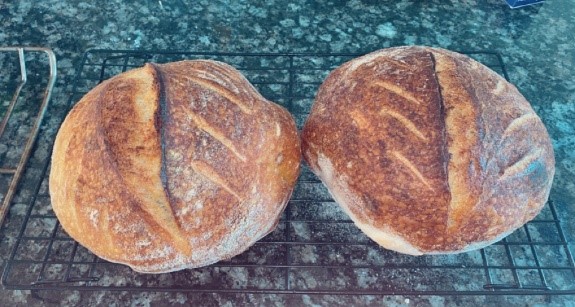
Making Fungi is Fun!
Sourdough for Science sparked a new passion within me during my first year of college. After finding this experiment through a project for class, I developed a fascination for breadmaking. I used my discoveries to create a strong starter and bake my first loaves of bread. For about 8 months, I have been keeping my healthiest starter alive! I was also able to develop my own method for making sourdough after much trial and error. This is the reason why Sourdough for Science is so fun! After completion, you can choose to develop yourself as a baker and learn a very practical skill. It truly has been a great experience baking sourdough — outside my roommates being angry over the messy sink!
Flour + Water. It’s That Simple!
Flour and water are the only two ingredients needed to create a sourdough starter. Contrary to how most bread is made, no special types of yeast (i.e instant yeast packets) are needed to make sourdough. Instead, a sourdough starter is used. These starters consist of a mixture of flour and water that have been fermented by the wild yeasts and bacteria that naturally live in your home and in the environment.[1] By leaving the mixture of flour and water out, these bacteria and yeasts are able to enter the jar and start eating away at the food you left them.
All About Fermentation
Once the bacteria and yeasts inhabit the starter, they begin a process called fermentation. Fermentation can be thought of as a “controlled spoil.”[2] In the culinary world, fermentation is used to micromanage the bacteria and yeast behind delicious goods such as dried meats, alcohol, and bread. With proper management, harmful bacteria and fungi such as salmonella and mold will be warded off.

The three main products of sourdough fermentation are carbon dioxide (gas), acid, and ethanol (alcohol). The carbon dioxide is what causes the bubbles that cause the starter to rise, while the ethanol is reprocessed by the microbes to produce lactic acid. This acid is what puts the “sour” in “sourdough.” In addition, the acid acts as defensive mechanism against bad bacteria and fungi. Fermentation may seem like a complicated process, but PHD levels of understanding the minutia of fermentation is not required to make a starter!
Getting Started!
Fermenting your own sourdough starter is very simple in a household setting, yet it teaches you so much about all the microorganisms that dwell in your home. All it takes is a few basic household items and a couple additional materials: a jar, a spoon, pH strips, a ruler, a thermometer, flour, and water! Once you get started, you will observe as a small mixture of flour and water goes from being this small ball of dough to a lively ecosystem of microorganisms. After 14 days, you can use your sourdough starter to reward yourself for your contribution to science with a loaf of sourdough bread you made all on your own!
To participate in Sourdough for Science, all you need are the aforementioned materials and a few minutes of your time a day. I also recommend referring to this Sourdough Starter Guide by Joshua Weissman on YouTube to make a healthy starter. The beauty of this citizen science project is that you can shape it any way you want. Personally, I chose to test multiple types of flour with multiple trials for each. I chose this route to test which types of flour yielded the healthiest starters. However, you do not need to feel inclined to participate to that extent! If you only want to test one type of flour or your own method, that is perfectly fine too!
The Purpose
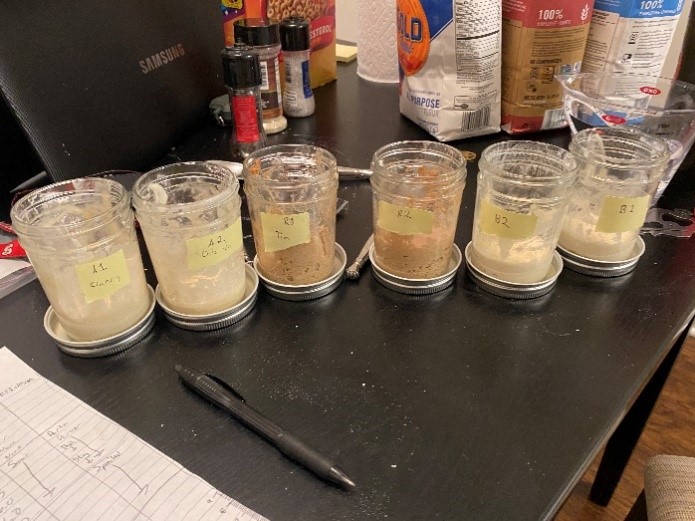
Like most other living things, each sourdough starter is unique. Because sourdough starters contain bacteria and yeasts unique to one’s household and/or region, there are always slight differences in how each sourdough starter progresses. These differences are what contribute to the different properties of a bread loaf. From taste to texture, each sourdough starter yields a different loaf of bread! What exactly causes the differences in the starter is still a mystery. This mystery is what Sourdough for Science and the parent project, Global Sourdough Project, is trying to crack.[3]
When asked about what sparked the Global Sourdough Project, Dr. McKenney states, “There wasn’t a broad understanding of global sourdough diversity (i.e., what types of microbes there are) or the “rules” that drive that diversity (i.e., why we see some types of bacteria or yeast in one starter but not another).” Each day for 14 days, you will measure the change in height, pH (acidity/basicity), and record any other observations such as aroma, color change, etc.
These data points will then be submitted to the Sourdough for Science website for analysis by professional scientists Dr. Erin McKenney, Dr. Anne Madden, and Lea Shell. While there are differences, there are also some similarities. A study by the Research Group of Industrial Microbiology and Food Biotechnology (IMDO), Sourdough for Science, and the Global Sourdough Project, seek to find these similarities.[4][5]
Discoveries
After collecting and analyzing starters from around the world, both IMDO and the Global Sourdough project made many discoveries regarding commonalities across sourdough starters. For example, it was discovered that sourdough starters made in bakeries tend to contain a yeast species called S. cerevisiae, or “baker’s yeast.” This is likely due to this type of yeast being used in other types of bread and has thus found itself floating around in the air around the bakery.[6] Another location-specific bacteria is Lb. sanfranciscensis (now fructilactobacillus after a recent name change), which, as the name entails, is common in San Francisco.[7]
While uncommon, similarities in the microbes bring microbiologists one step closer to understanding what exactly is happening inside of a sourdough starter. These discoveries answer why bread from New York, San Francisco, etc. taste better than other areas despite following the same process of breadmaking. The rumor of the taste of New York bread being “in the water” is partially true, but it is more the bacteria and yeast that is in the water!
Personal Discoveries
After completing the experiment, I made some interesting discoveries regarding the type of flour and preparation of the starter. I found whole wheat flour rose the most, but also had the highest risk of growing mold. All-purpose and bread flour did not mold, but they did produce a lot of hooch, which is an indication the starters were being underfed. These findings were interesting because all of my starters were fed using the same method.
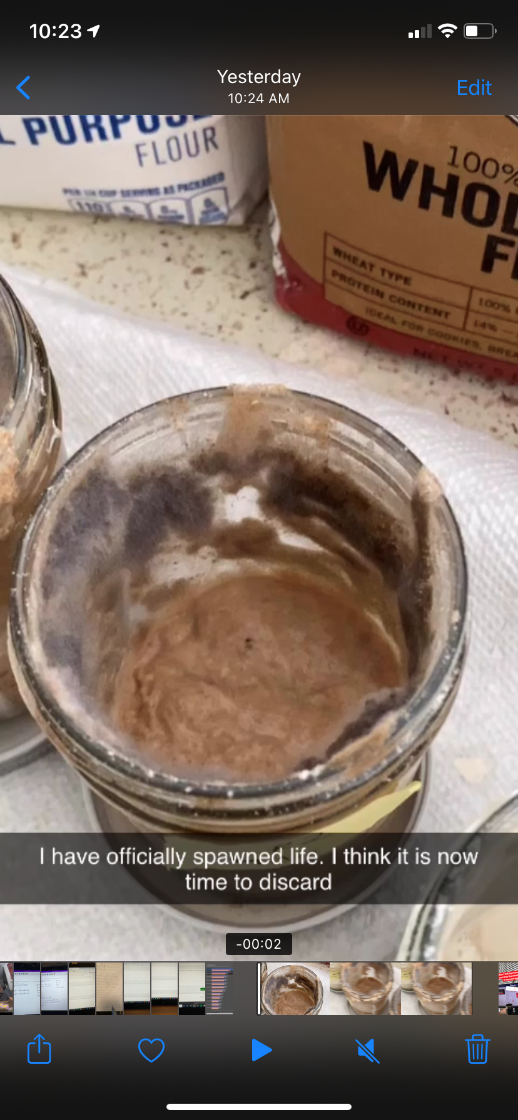
For my experiment, I used the method proposed by Sourdough for Science where 1 tbsp flour and 1 tbsp water fed 1 tbsp of inoculated starter from the previous day. After the 14 days elapsed, I did more research and found Joshua Weissman’s sourdough starter guide. Following this method, I found a 25g inoculation fed by 50g unbleached all-purpose flour, 50g rye flour, and 100g water yielded a strong starter with no mold or hooch.
The production of mold and hooch led me to conclude the ratios for my experiment needed adjusting. In addition, a mix of the different types of flour rather than just one type per starter may have been necessary. What was most likely happening was the starter ate away at all the nutrients in a short time period, which allowed the mold and hooch to be produced. By adjusting the inoculation and feeding ratios as needed, these issues can be avoided and a strong starter can be produced. There is no “perfect method” since every starter is different, so play around and find what works best for you!
Looking Forward
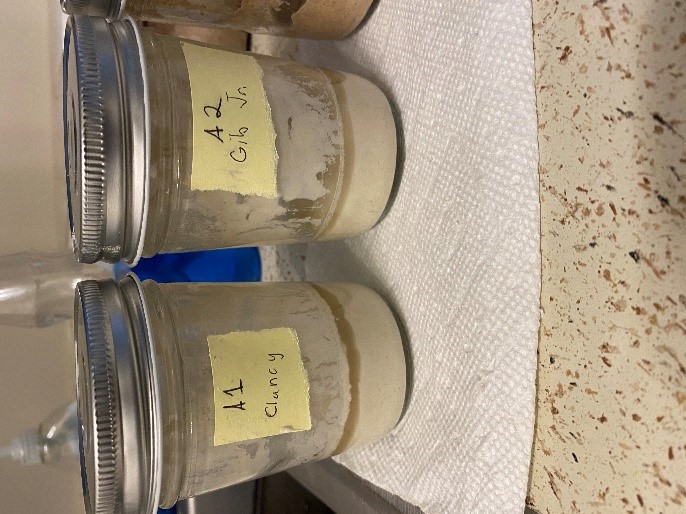
There is still much to be discovered through Sourdough for Science. Via Dr. McKenney, “Most bakers don’t have access to lab equipment – so they’ll never know exactly which exact microbes grow in their starters or which specific aromatic compounds those microbes produce.” However, as more volunteers participate in Sourdough for Science, alternative methods for identifying microbes within a sourdough starter can be developed.
One such example is the “Sourdough Wheel,” which lists common sourdough smells to allow bakers to infer which microbes are living in their starter. Moving forward, participation in Sourdough for Science may result in major discoveries in the baking world. Every contribution helps!
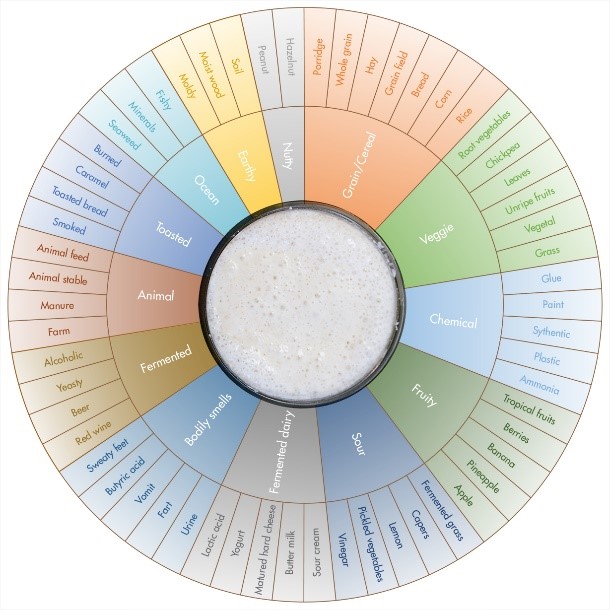
Final Thoughts
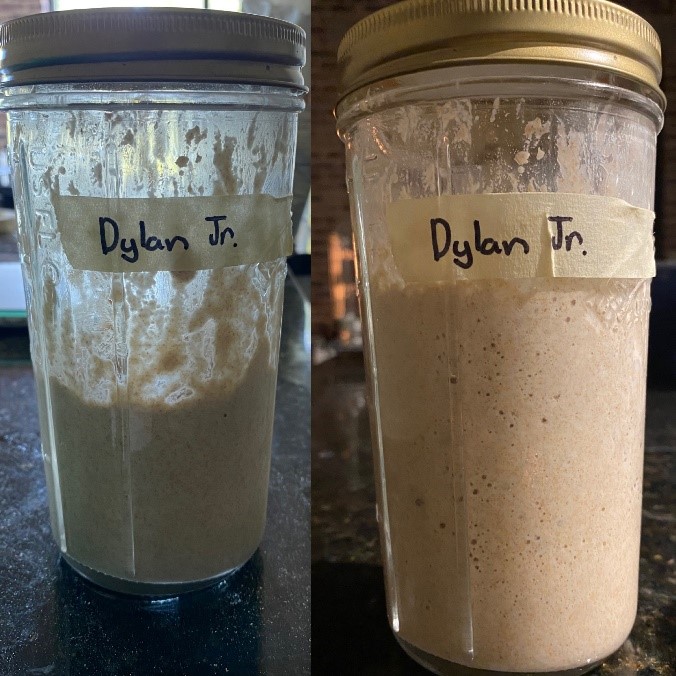
While this experiment does seem time consuming due to the amount of days you have to manage the starter, it truly does take minutes. Each data point you send in really does contribute to a greater cause for such little effort. Sourdough for Science has taught me a lot about the bread-baking world, as I had no experience prior to starting the project. Sometimes, you will fail[8], but that is perfectly okay!
I had to discard some of my starters since starting the experiment. Failing is a part of science, but failure makes success even more rewarding! And, as stated before, nothing is more satisfying than rewarding yourself with a loaf of bread you crafted from scratch.
——————————————————
[1] De Vuyst, L., Van Kerrebroeck, S., Harth, H., Huys, G., Daniel, H.-M., & Weckx, S. (2014). Microbial ecology of
sourdough fermentations: Diverse or uniform? Food Microbiology, 37, 11-29. https://doi.org/10.1016/
j.fm.2013.06.002
[2] The Editors of Encyclopaedia Britannica (Ed.). (2020, March 6). Fermentation. Encyclopædia Britannica. Retrieved
October 2, 2020, from https://www.britannica.com/science/fermentation
[3] Sourdough for Science, 2018
[4] Rob Dunn Lab (Ed.). (2020). The Global Sourdough Project. Public Science Lab. Retrieved October 2, 2020, from
http://robdunnlab.com/projects/sourdough/
[5] De Vuyst et al., 2014, p. 11
[6] De Vuyst et al., 2014, p. 18
[7] De Vuyst et al., 2014, p. 18
[8] See Figure 3

